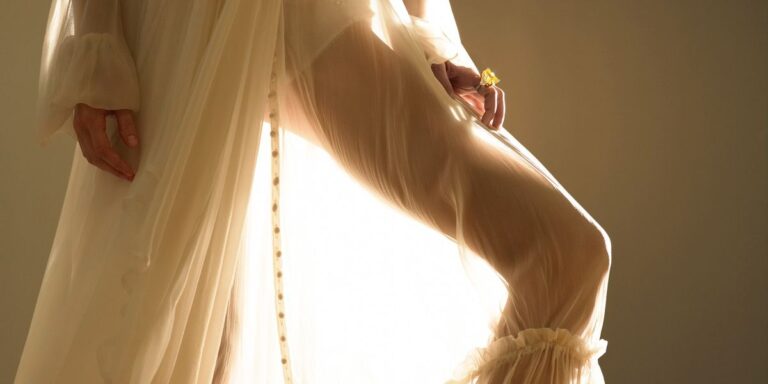There are many ways to show skin—crooked hems, cut-out waists, exposed backs—but see-through fabrics are perhaps the most popular these days. This season’s runways saw head-to-toe sheer examples, like Alaïa’s cream-white maxi dresses and Saint Laurent’s collection of skin-tight nylons. Then came a flurry of see-through separates, like layered see-through tops at Dries Van Noten, sheer skirts at Fendi, and sheer capes at Simone Rocha. Designers aren’t playing with subtlety, they want their customers to bear it all.
Though the fashion world continues to be obsessed with lightweight fabrics, the clothes shown on the runways and at award ceremonies don’t directly correlate to what women actually wear.
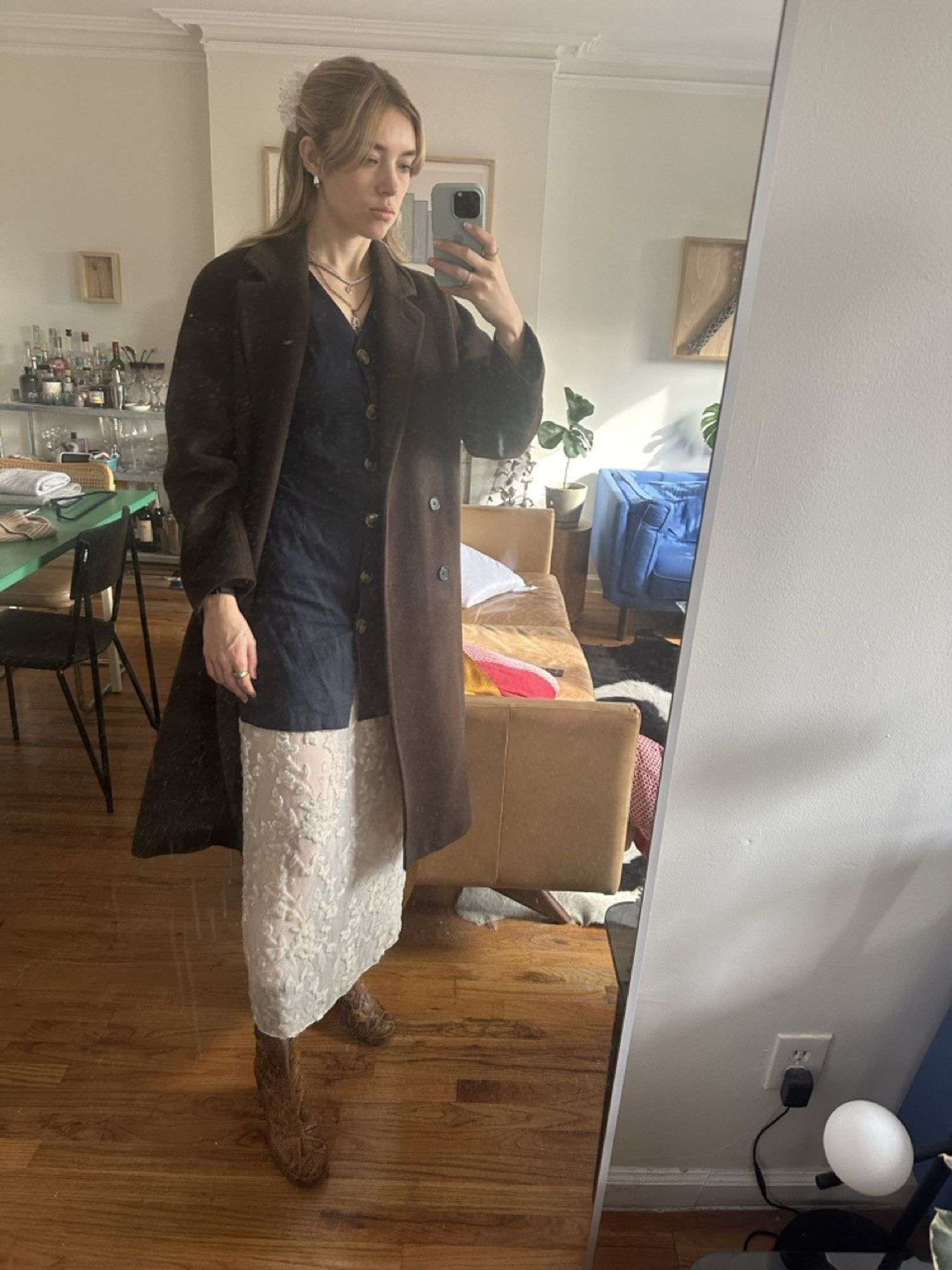
Courtesy of Emilia Madden
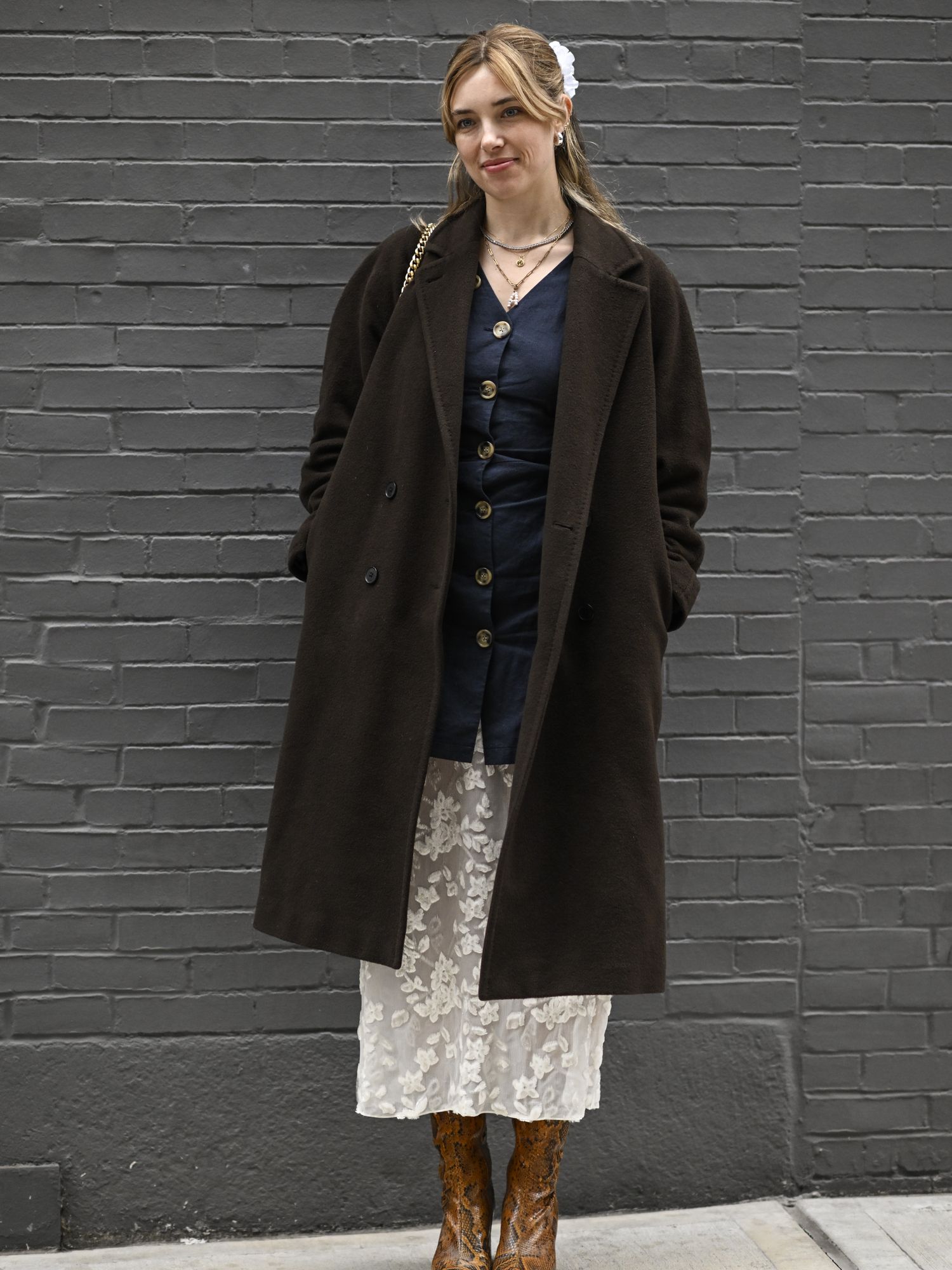
Proenza Schouler show look NYFW F/W 24
Getty Images
I’m a big supporter of no-nipple exposure. Women have the right to show their bodies however they want, and nude outfits have become a mainstream styling choice on the red carpet. Celebrities from Dakota Johnson to Rihanna to Anne Hathaway have been posing in step-and-repeats wearing nothing but translucent outerwear and nude underwear for years. That doesn’t mean they’re without controversy, though, and sometimes they might just be getting into it. While a completely see-through look may be empowering for some, from a practical standpoint, I’ve found the barely there fabric to be limiting.
My take on the see-through trend is somewhere between John Cena at the Oscars and a woman walking the Oregon Trail. I would never show up to a wedding or a friend’s party in a nude dress, even if I was wearing the right underwear, and I would never wear a see-through top to the office without at least covering my chest and belly button. However, I do occasionally wear something see-through. As for my personal style, I’d say it’s situational see-through – showing a little skin at the right time.
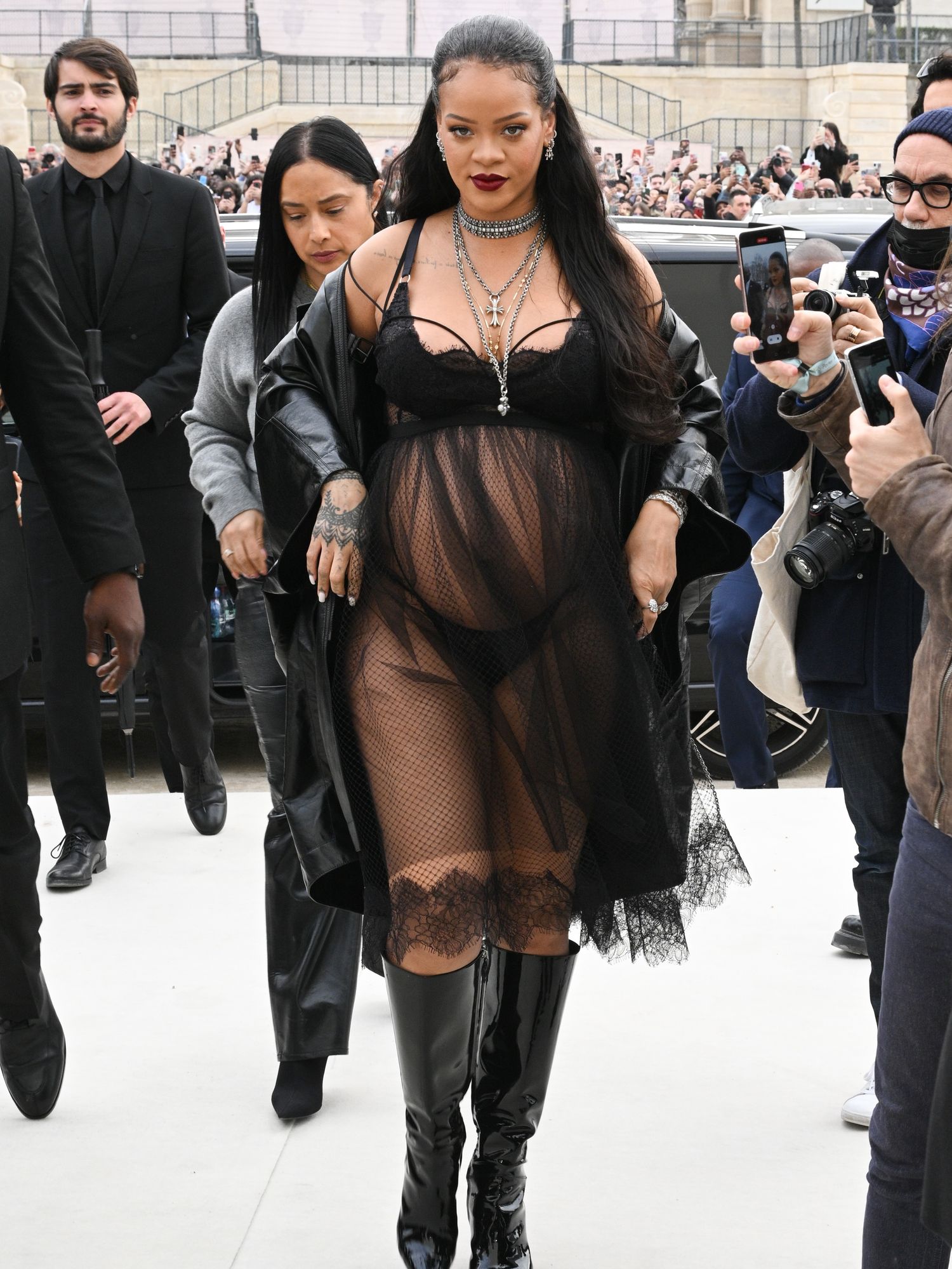
Rihanna appears in Dior’s Fall/Winter 2023 collection
Getty Images
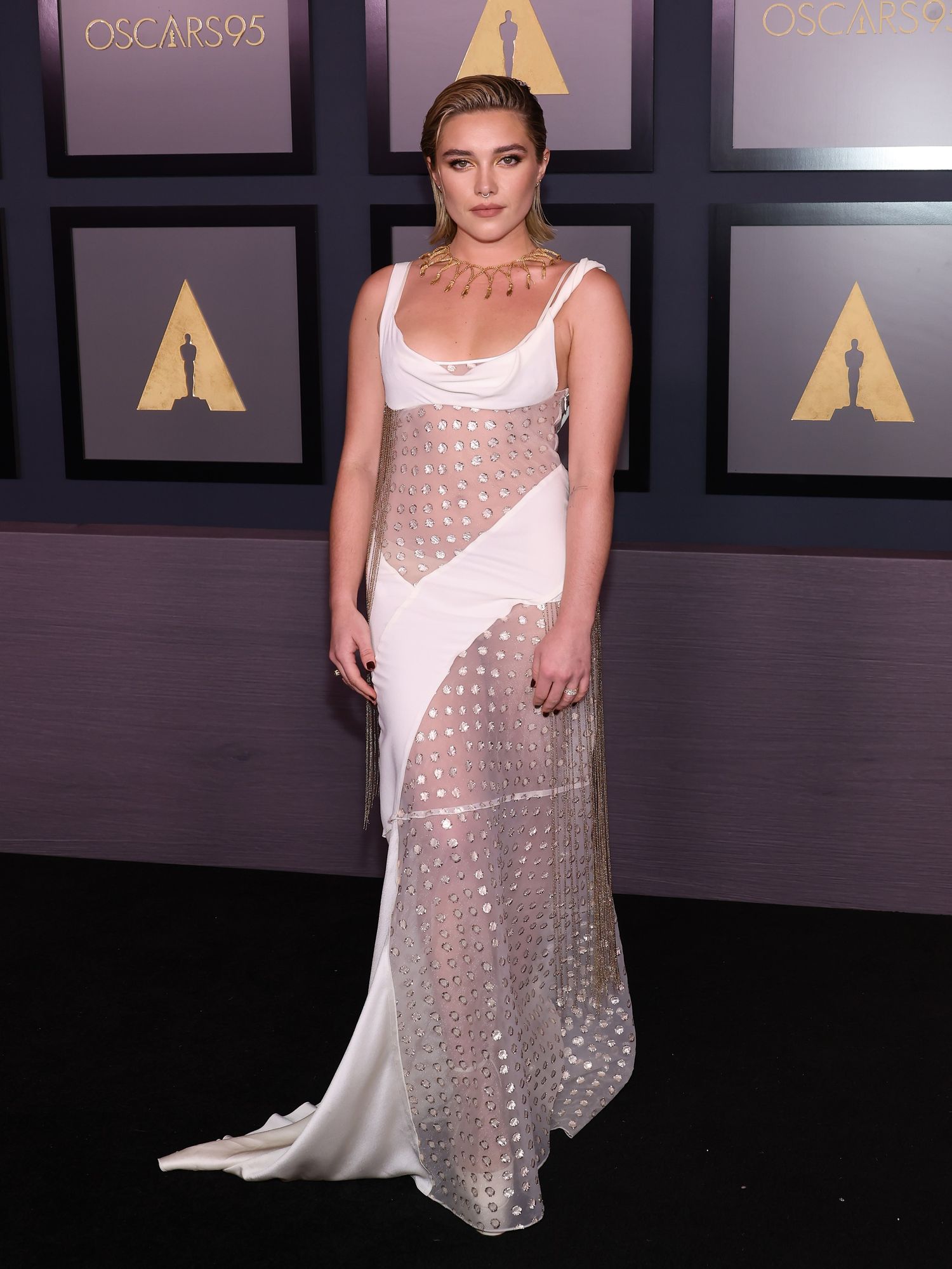
Florence Pugh at the Academy of Motion Picture Arts and Sciences Awards
Getty Images
There were many occasions during Fashion Week where nearly invisible clothes made an appearance not only on the runway but also outside the shows. Street style is considered the pinnacle of fashion inspiration. Women pose in designer clothes that are their job to put together (I saved a lot of these images on my Pinterest mood board). But again, not every outfit goes from aspirational to wearable. A dress that amounts to a fisherman’s net draped over your body works well when posing for street style photographers, but probably not for an ordinary day in New York.
Translating revealing clothing into real life can take a bit of creativity. I like to use see-through clothing as a styling tool to add layering and texture. While attending last season’s Proenza Schouler fashion show, I embraced the trend without feeling shy or self-conscious by wearing a white Tibi skirt with a see-through, velvet burnout print underneath a shorter dress.
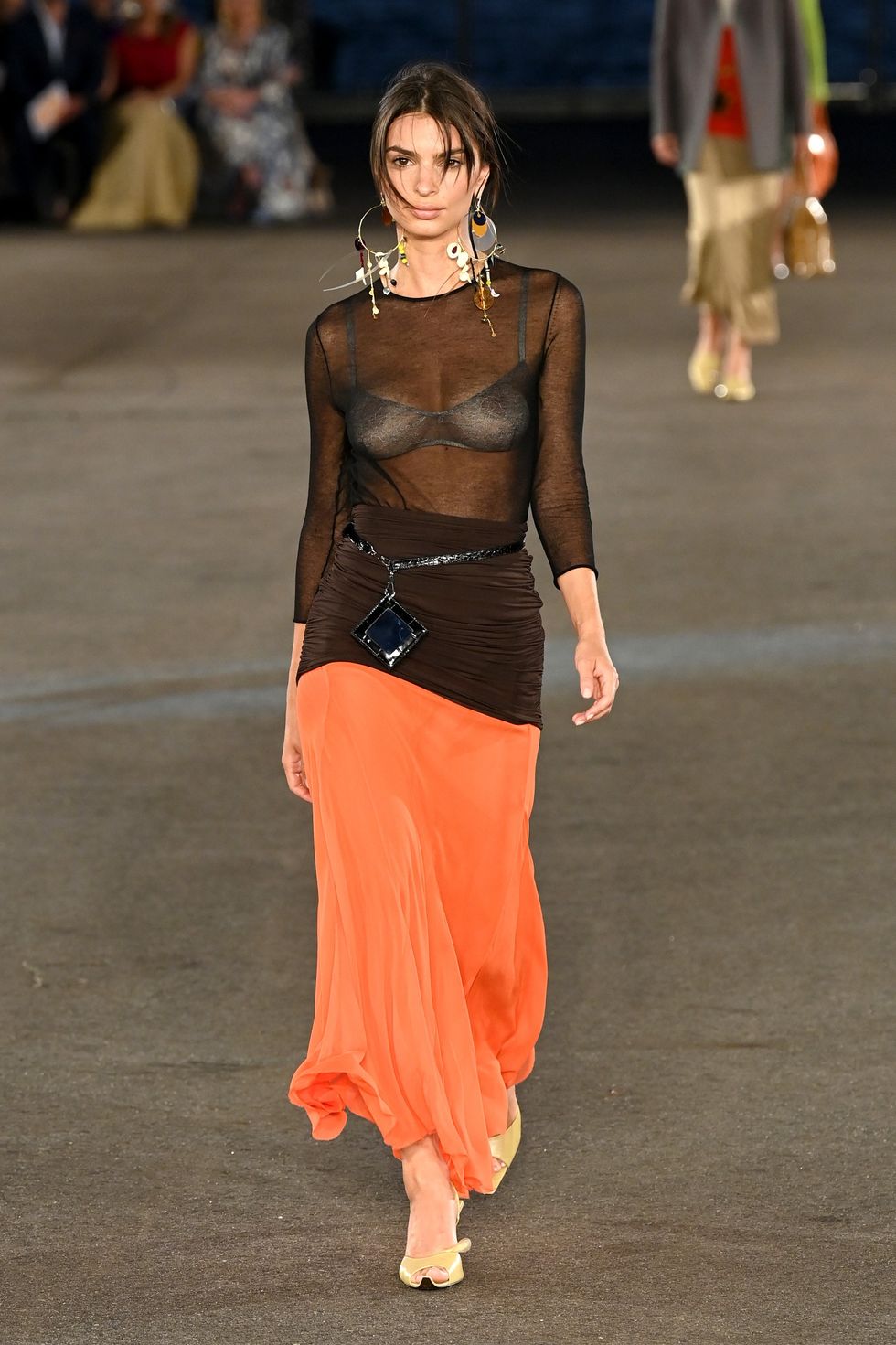
Emily Ratajkowski walks in the Tory Burch Spring/Summer 23 show
Getty Images
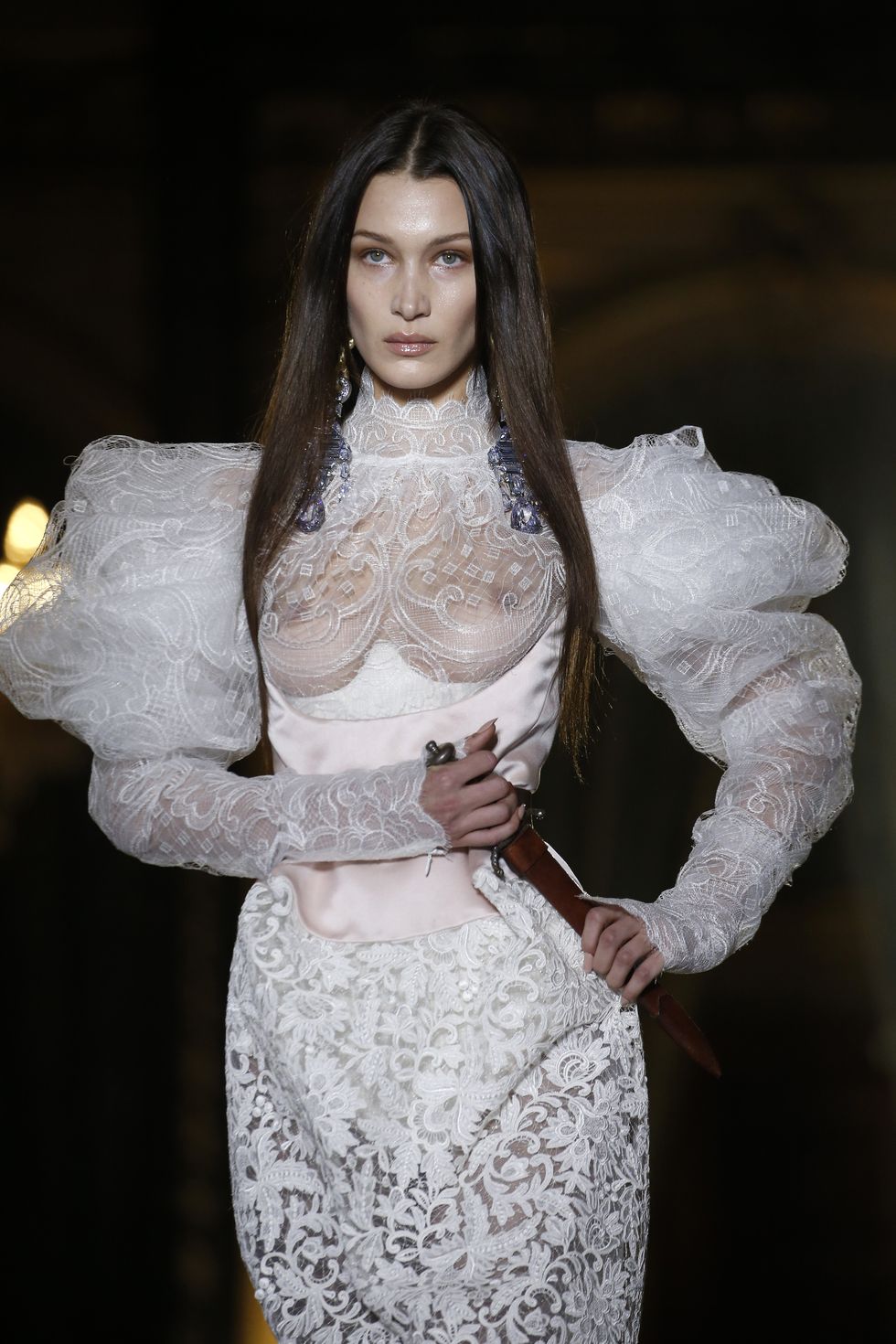
Bella Hadid walks in the Vivienne Westwood Fall/Winter 21 collection
Getty Images
A sheer dress can be worn with a blazer over it for extra coverage or a slip underneath, both of which can be worn to create style without being too see-through. A top made from a sheer fabric can add a delicate touch to a more traditional casual option like jeans, balancing practicality with ephemerality. Everyone has their own level of sheerness that they’re comfortable with. My goal is to avoid feeling worn by the outfit, but rather to use the trend to suit my style, not to feel against it.
The runways celebrate the boldness of wearing see-through garments alone, baring the chest, undergarments and outerwear, and for the sake of comfort, I don’t plan on giving up my bra anytime soon.
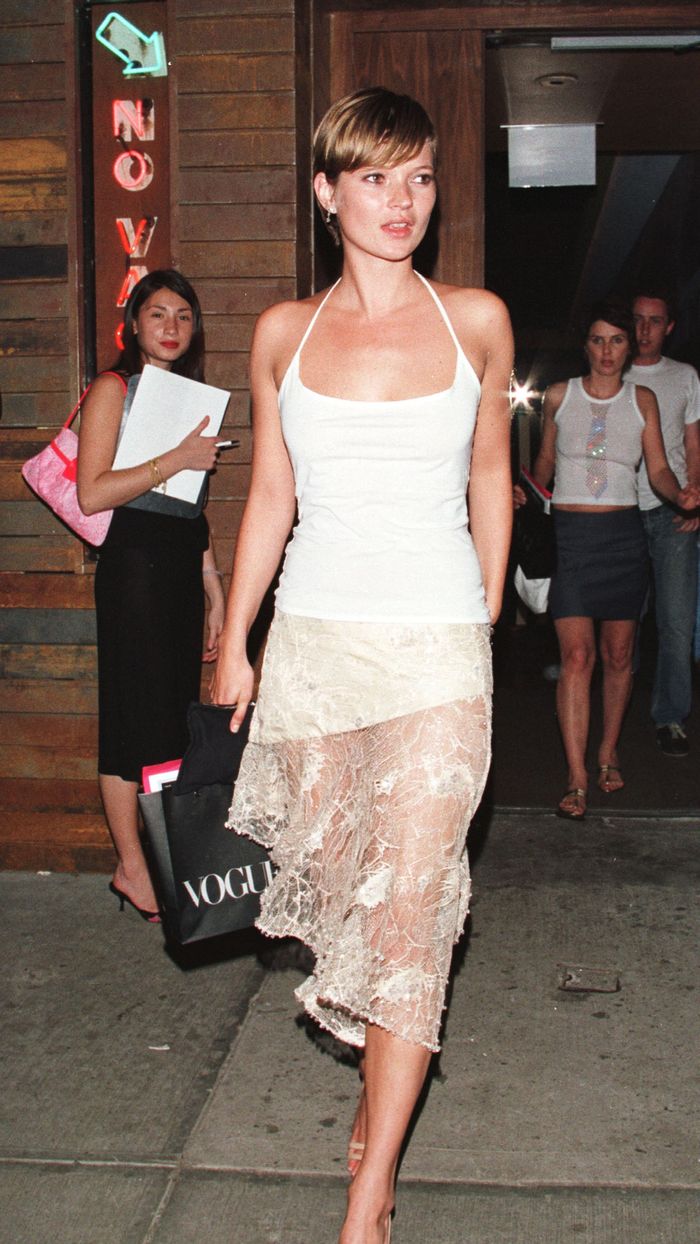
Kate Moss, Matthew Williamson, Fall/Winter 2001
Getty Images
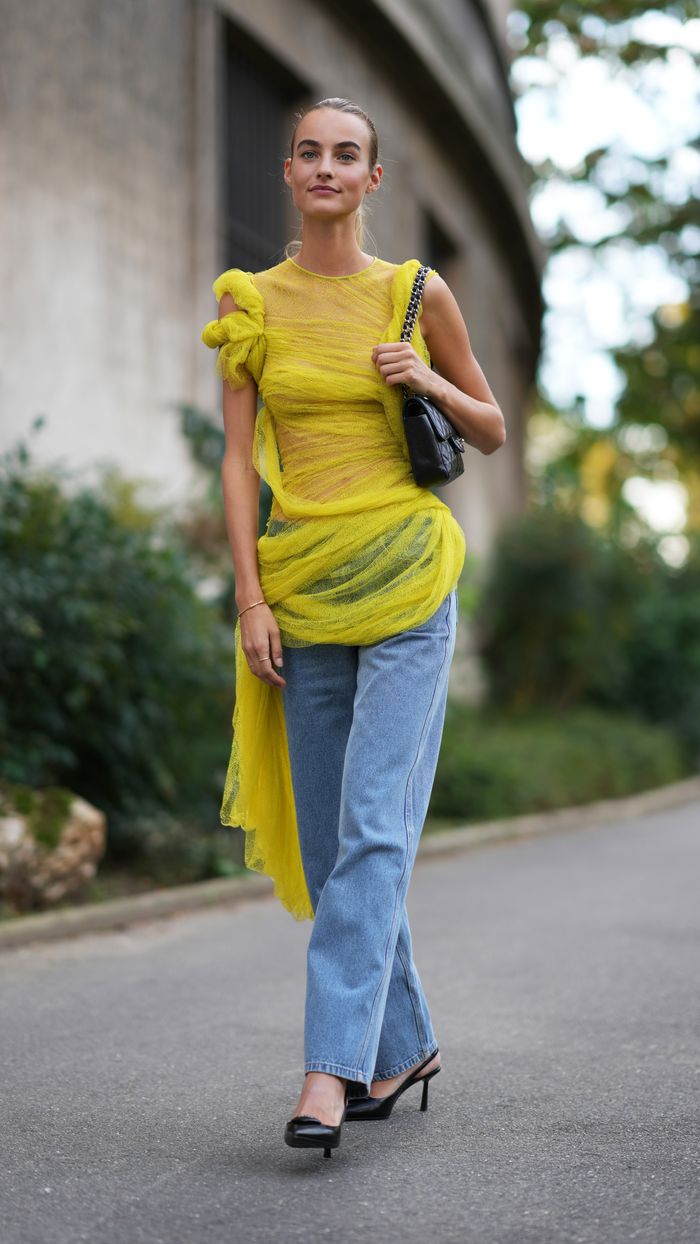
Christopher Esber S/S 24 Guest
Getty Images

